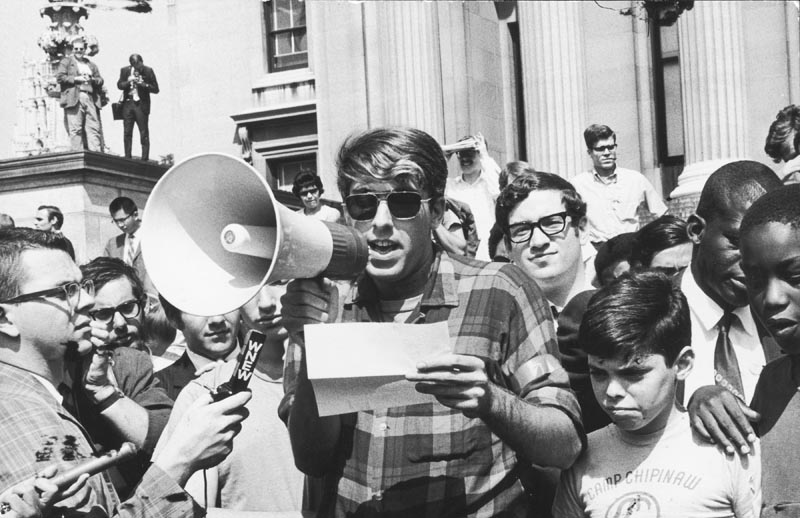Activism Is at the Core of Physics
Winter
2017
Feature
Activism Is at the Core of Physics
Rachel Kaufman, Contributing Writer

A physicist and a #BlackLivesMatter activist. An astronomer and a feminist. A biophysicist and an LGBTQ advocate. Many physicists are finding that it is now not just possible but crucial to be both scientist and activist.
Jorge Moreno, an astrophysicist who studies galaxy formation at Cal Poly Pomona, is an outspoken advocate for advancing minorities in physics. "I knew I was not represented in my field," he says. "Students look up to me; I don't have the luxury to stay silent."
Moreno works to provide students of color with opportunities to explore more fields that might interest them, for example, partnering with John Johnson of Harvard to establish the Banneker Institute and Aztlán Institute, summer programs to prepare undergraduates of color for astronomy graduate programs. He is also outspoken on social media and on the blog Astronomy in Color.
While some of the tactics or initiatives used by modern physicists are new, the presence of activism in physics goes back decades.
In the late 1960s a group of scientists, frustrated with the role physicists played in developing instruments of war, founded the radical group Science for the People, which addressed issues like the militarization of scientific research, the corporate control of research agendas, and more. The group was active for nearly two decades, and a new generation is reviving it for all branches of science, writing, "Some of the issues we face today have changed in important ways, but fundamental questions of power, ideology, and democracy in science remain."1
Physicists also played roles in other groups, like the illustrious Students for a Democratic Society (SDS). Frank Rosenthal, now 72, dates his activism back to his days as a graduate student in nuclear physics at Columbia.
"I was a grad student and my advisor had given me an assignment to work out the differential equations of consecutive [nuclear] decay. It was really boring, and I was looking at the student newspaper, and it said 'Rally Today.'" He walked out of his office straight to an SDS rally that ended up becoming the famous Columbia takeover of 1968, in which SDS and Student Afro-American Society occupiers took over multiple buildings on the Columbia campus for days.
"I was in Fayerweather Hall—we called it the Fayerweather Commune," he says. They stayed there six days, although Rosenthal remembers leaving each night to refill dewars with liquid nitrogen to keep his germanium detectors from drifting—science waits for no one, after all. "I told them I had to go back—I had a key, I went to the lab, filled up the nitrogen dewars, and then came back."
The politics of science
But why speak out at all? Why march, why protest? Isn't physics, after all, inherently apolitical? That's an argument that people have been making for decades, and, Rosenthal and Moreno say, is wrong.
"I think that argument," Moreno says, "comes from people who haven't experienced oppression."
The good news is that good physicists are swayed by data. "I give them anecdotes and data about harassment, and they begin to understand," he says.
Further, science may have an "objective reality"—"The charge on the electron is not political," as Rosenthal puts it, but doing science is inherently political. "What questions [are you asking?] Who's doing it? Who wants it to get done, and what are they using the results for?"
What comes next?
Many activists are worried about the election of Donald Trump to the highest office in America, expressing concern that a man who ran his campaign on divisive rhetoric will undo much progress that has been made in the country. Moreno explains what comes next with—fittingly—an astronomy metaphor.
"If people in government say it's okay to do certain things, that emboldens people who are in the extremes. I've heard of many incidents of harassment, even on university campuses," he says. "[But] this is a solar flare. Many people are [only] noticing this [now] because they have never experienced racism. I've experienced racism all my life. I've always seen the sun; now it's a little intensified. The rules have changed, but I think there are many good people in astronomy who will protect people of color and women." //
